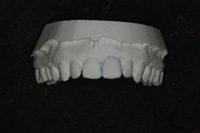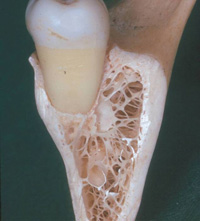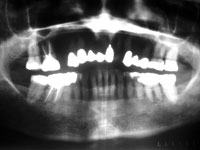I first met Dr. Don Lewis, an oral surgeon from Cleveland, Ohio, when he was presenting his embezzlement program at the 1996 Orlando ADA meeting. Don told me that one out of four dentists will be, is, or has been the target of embezzlement. He quietly pointed out that my dental booking program, which I had been presenting for the previous 20 years, neither did justice to my material nor raised the consciousness of dentists to the potential of embezzlement. Since then, Don and I have been working closely together to raise dentists’ consciousness about the growing problem of employee embezzlement and fraud in their practices.
ACCEPTING CASH PAYMENT REQUIRES YOU TO MAINTAIN A CHANGE FUND
For patients who want to pay cash for services, Basic Accounting 101 requires a dental office to maintain a cash change float at the front desk. This fund allows staff to make change for a patient in a quick and professional manner. The float is created by issuing a business check for $100 made payable to “fund cash change account.” The check is presented at the bank, and the $100 received (ask for a combination of $1, $5, and $10 bills) is used to establish the change fund. When the books are reconciled at the end of each business day, the cash on hand should add up to the amount of cash paid by patients that day plus the $100 float. The cash received from patients is banked daily, leaving the $100 available to make change on an ongoing basis. Doctor, the $100 won’t be returned to the practice until the day you retire or sell the practice, whichever comes first! By the end of the week, the $100 will often consist of five $20 bills. Before the office opens on Monday, these notes should be exchanged for a mixture of $1, $5, and $10 bills so that making change is simple for the staff and the patient.
- Staff and doctor’s personal money is not mingled with the practice’s money.
- Mistakes are easily discovered when balancing at the end of the day.
- It saves staff time and portrays professionalism to the patient and, most important, a clear audit trail is established for cash coming across the counter.
If there is any disadvantage to using a change fund, it is that someone must remember to start each week with a stack of singles, fives, and tens.
DAILY RECONCILIATION OF CASH
Whether you are a sole proprietor or a corporation dictates how your daily cash payments must be handled at the end of the day. In corporations, doctors may not treat incoming cash payments as their personal onsite ATM. As officers of the corporation, doctors receive a regular salary. The cash belongs to the corporation and must be banked, along with the checks, on a daily basis.
- Monday, December 10th: Cash paid by patients = $200
- Change fund on hand = $100
- Total cash on hand = $300
- Change fund maintained at $100
- Cash available to doctor = $200.
A NOTE ABOUT PETTY CASH
When I present my Internal Control program at conferences, I always poll my audience to see how many practices have installed a cash change float for making change. I find that the vast majority of practices, in fact, make change from a variety of inappropriate sources, including the wallets of staff or doctor, or the infamous petty cash fund. Too many dentists keep $200 or more on hand in their petty cash fund. In most cases, this high amount is required because the practice makes change for patients out of petty cash, instead of using the money to only pay the mail carrier or other small emergency expenses that come up during the business day. Once a cash change float is established, keeping a large amount in the petty cash fund is no longer required or recommended.
PROCESSING PATIENT CHECKS
Checks are received and recorded in an easy five-step process:
(1) Make sure the payee name (the doctor’s or practice name) is filled in correctly.
(2) Stamp the back of the check with the endorsement stamp.
(3) Credit the payment to the patient’s account.
(4) If the payment is made at the time of service, give patients the top copy of a two-part duplicate charge/receipt slip.
(5) Enter check onto the daily deposit slip.
BENEFITS OF ISSUING CHARGE/PAYMENT RECEIPTS
Health providers need to protect their practice income by insisting that charge/receipt slips, numbered and in duplicate, are used in their offices. (Your office may call this form a routing slip, walkout statement, superbill, etc.) This form conveys to patients the charges they incurred in the office that day, as well as any payments and adjustments made to the account. Most slips also carry information about the next appointment. How the charge/receipt slip is created in your practice will be determined by your computer software company’s design and whether or not you enter all needed treatment into the computer prior to the appointments.
- Inform before you perform. Patients who leave at the end of each visit with a total breakdown of charges/payments/adjustments will not be unpleasantly surprised when receiving the monthly statement.
- Stop embezzlement. Cash is the favorite currency of the embezzler. Duplicate charge/receipt slips, numerically numbered, are issued for each patient. The system creates a very effective foundation for the kind of solid internal controls that make embezzlement much more difficult for employees.
DOCTOR’S 5-MINUTE DAILY FINANCIAL AUDIT
I work very hard to establish management systems that do not require the dentist to be involved with management every few minutes. However, Dr. Lewis and I are adamant that doctors take the responsibility to do a 5-minute audit of each day’s financial activity. Ask your staff to place each day’s charge slips, in numerical order, on your desk before you leave. So that you do not alienate the staff and imply a sudden lack of trust on your part, the following script offers an easy way to implement this system.
POSTDATED CHECKS
Historically, healthcare providers have found postdated checks to be an excellent method to facilitate collections. In recent years, some employees have told me that taking postdated checks is illegal. This is not true. What is true is that when you accept a postdated check, if and when a bank returns it to you for insufficient funds, the law does not support you as strongly in making a claim against the patient as if you handled delayed payments in the following manner.
To be legally in compliance, your staff should no longer use the term postdated check. Neither should they request that patients write a check for you to hold for a future date. Rather, your staff should wait for patients to inquire about whether the practice will take a check and hold it for future deposit.
- Patient name and account number
- Today’s date and the future date check will be deposited
- Check amount and check number.
Once the receipt is filled out, the top copy is detached and given to the patient. The middle copy is stapled to the front of the check and placed in a “checks being held for deposit” envelope in the cash drawer, with the future deposit date highlighted in a bright color. The third copy remains in the receipt book as the master copy. This manual receipt system works extremely well when staff make collection calls and patients offer to send in a check to be held for future deposit. When the check is received, it can be processed through the manual receipt book system. Staple the top copy of the receipt to the front of the check being held, and mail it back to the patient so that it arrives within 3 to 10 days before you deposit the check. You are now in legal compliance with the notification needs of your state.
PAID IN FULL
When processing patient checks received through the mail, it is quite usual to find that a patient has written “Paid in Full” on the front of a check. The patient will have made this notation for one of two reasons:
(2) Patient perceives that the amount being billed is not accurate, or that there is some room for interpretation of the stated amount due. Checks received in the practice marked “Paid in Full” need to be handled carefully to protect the practice both legally and financially. If the practice acknowledges that the amount of the check correctly covers the outstanding balance on the account, the check is processed.
PROCESSING INSURANCE PAYMENTS
I highly recommend posting all insurance payments to patient accounts so that they include the insurance carrier’s name and the specific family member who received treatment. For example, “12/10/01 Great West Life insurance payment Mrs. J $400.” This system maintains a clear audit trail of incoming insurance income and allows for easy detection of posting errors. When a family has more than one insurance, it is easier to track the primary and secondary insurance payment history. It is also simpler to identify accounts that have been incorrectly credited with insurance payments belonging to other accounts. Additionally, it provides a useful record of insurance payments paid in error on a predetermination claim. This latter situation happens more than most people realize. When the prepayment is received, credit the patient’s account and bank the check. It is then necessary to inform the insurance company of this action and to advise the carrier that upon completion of treatment you will submit a claim for rendered treatment to which the prepayment will be credited. The patient’s account might read: “12/10/01 Great West Life predetermined payment Mrs. G $1,000.”
TWO-PARTY INSURANCE CHECKS
Depending on the policy purchased by the employer or union, an insurance company may issue a check made payable to both the provider of the services and the patient. Although these checks may be sent to the practice, they are usually sent directly to the patients. These payments must be handled correctly to avert IRS review. Here are some guidelines:
- The patient must endorse the check to the doctor/practice. The check is then deposited into the practice account, and the patient’s account is credited for the full amount.
- Staff should analyze the patient’s account to determine if any of this payment belongs to the insurance company (the insurance companies do make errors!) or has created a credit balance that should be refunded to the patient.
- If a refund is due to the patient, check to see if there is any outstanding treatment needed for either the patient or family. If this is the case, a telephone call may motivate the patient/family to use the credit toward the needed treatment.
- If the patient is due the money, a refund check is prepared and mailed to the patient with an appropriate note.
SUMMARY
Whether payments for service come in the form of patient cash or checks, or insurer payments, it is paramount that a doctor implement a strong accounting system to disclose all daily financial transactions. It is also essential that a strong audit trail be part of this accounting system. By taking a few minutes at the end of each day to do the necessary review, dentists protect their income and provide one of the best protections an owner can have against embezzlement. Let the staff know you are on top of the books!
Ms. de St. Georges is an internationally renowned dental practice management educator and a member of the National Speaker’s Association. She serves as a contributing editor for Dentistry Today, the first nondentist to be named to this position. She maintains JdSG International in Monte Sereno, Calif, and can be reached at (408) 354-4144 or info@jdsg.com.










